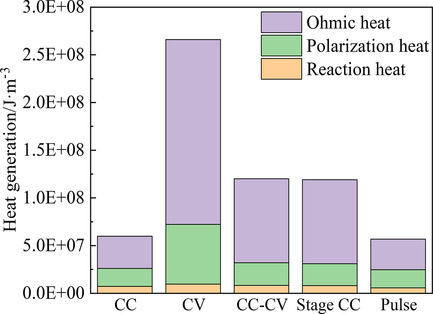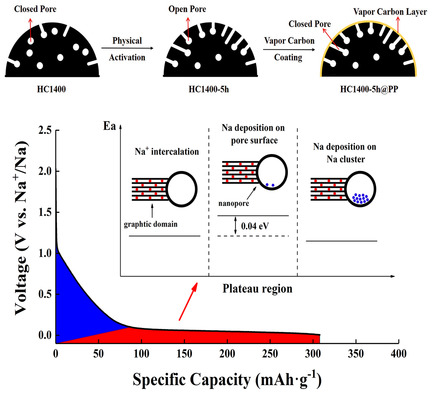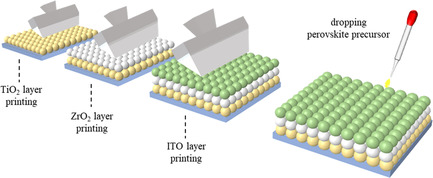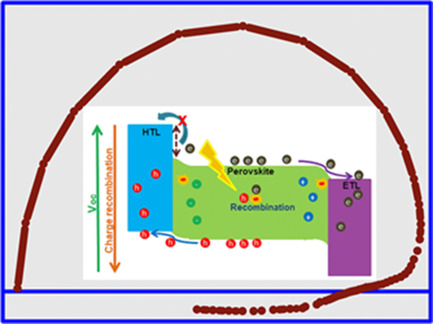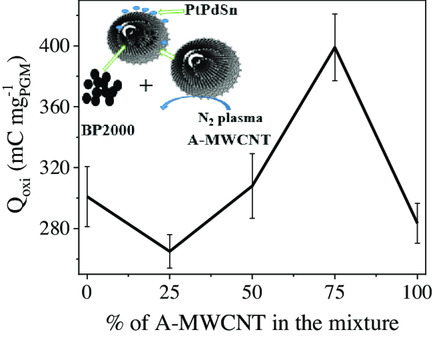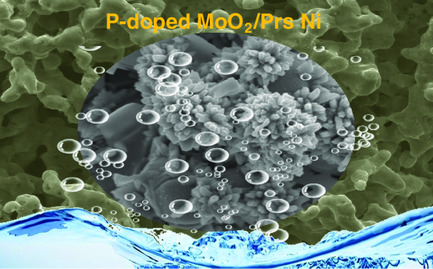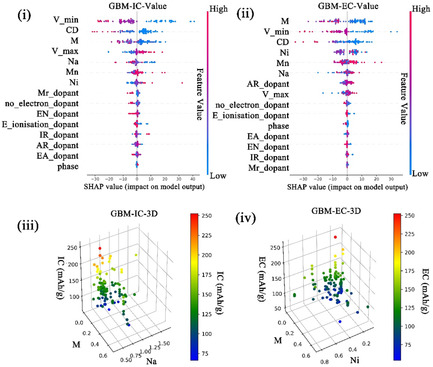Journal list menu
Export Citations
Download PDFs
Cover Picture
Achieving High-Performance Oxygen Reduction Catalyst and Zn–Air Battery through a Synergistic Nitrogen Doping Strategy
- First Published: 02 November 2022
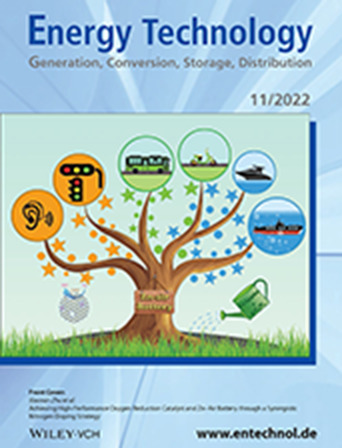
The catalyst obtained through the synergistic nitrogen doping of Fe-tpphz and g-C3N4 greatly enhances the oxygen reduction reaction dynamics, enabling excellent performance of a Zinc-air battery. With the “irrigation” of the catalyst, “fruitful” products on the tree rooted from the Zinc-air battery can be reaped, to achieve a greener and healthier life. More details can be found in article number 2200602, Mingjun Hu, Jun Yang, and co-workers.
Back Cover
Pressure- and Temperature-Dependent Interface Kinetics in Na3Zr2Si2PO12-Based All-Solid-State Na Metal Battery
- First Published: 02 November 2022
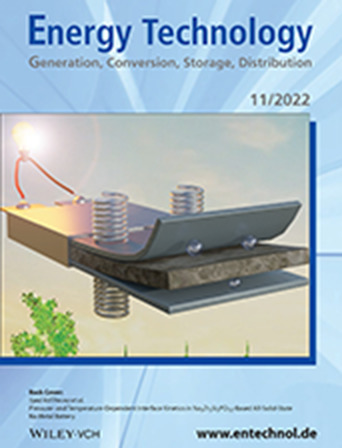
A new strategy for the stable operation of high energy, solid-state Na batteries by operating Na symmetric cells at elevated pressures is demonstrated. Enhanced interface kinetics are achieved at a stack pressure of 100 MPa and temperature of 50°C, evident by lowering the voltage polarization of the cells by 10 times. More details can be found in article number 2200658, Milana Trifkovic and co-workers.
Masthead
Reviews
Recent Research Advances in Ruthenium-Based Electrocatalysts for Water Electrolysis Across the pH-Universal Conditions
- First Published: 09 August 2022
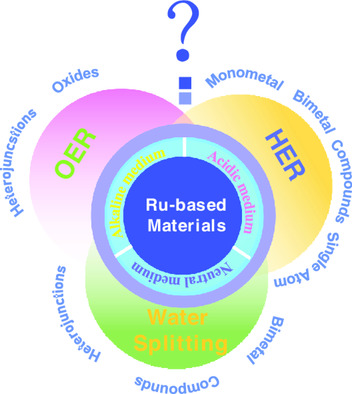
Multiple advantages of Ruthenium-based materials, including pH-universal window, super performance, cheaper price, have been universally acknowledged. Herein, summarizing the recent advances and development of pH-universal Ru-based electrocatalysts toward hydrogen evolution reaction (HER), oxygen evolution reaction (OER), and overall water splitting is focused, to provide the theoretical and experimental basis for a better design and synthesis of Ru-based electrocatalysts.
A Review and Perspective on Path Dependency in Batteries
- First Published: 09 August 2022
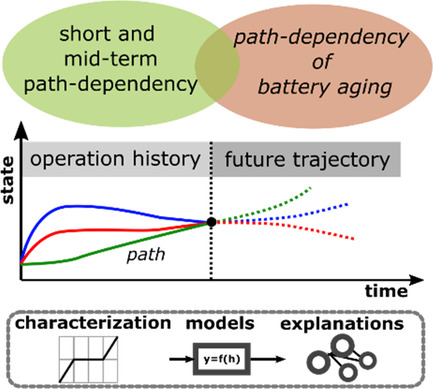
Batteries can possess path dependency at short, mid-term, and for aging. Herein, the future trajectory of the battery state depends on the operation history. The paper reviews research on path dependency and presents frequently suggested explanation models. Further, methods for characterization and promising modeling approaches are discussed. On this basis a perspective for future research and a common methodology is given.
High-Entropy Materials for Water Electrolysis
- First Published: 08 September 2022
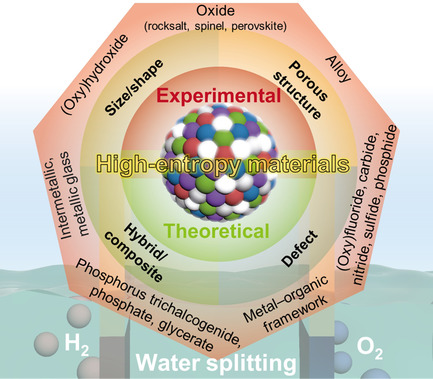
High-entropy materials are emerging as promising water-splitting electrocatalysts due to their compositional flexibility, structural stability, and synergy between different elemental components. Herein, the recent achievements in water electrolysis catalyzed by high-entropy materials, covering an overview of material candidates, a discussion of theoretical/experimental insights, a focus on materials design strategies toward improved catalysts, and perspectives on future research directions, are summarized.
Transition Metal Dichalcogenides for Photo/Electrochemical Energy-Based Applications
- First Published: 25 August 2022
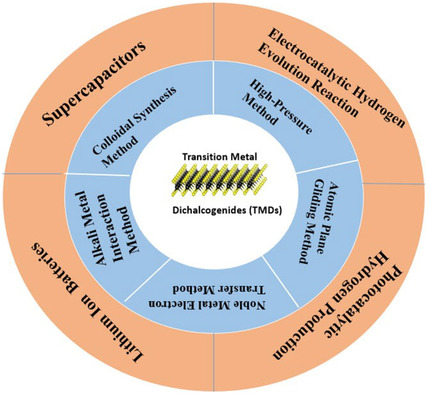
Herein, the stabilization of metal-phase 1T-MS2 (M = molybdenum/tungsten), its heterojunction liquid-phase synthesis, photocatalytic properties, and the supercapacitor properties of the synthesized structure are presented. Moreover, the synthesis of high-efficiency hydrogen production photo-/electrocatalysts is particularly important for improving the energy conversion performance that has become a hot spot for scientists to study in pursuit of this goal.
Research Articles
Achieving High-Performance Oxygen Reduction Catalyst and Zn–Air Battery through a Synergistic Nitrogen Doping Strategy
- First Published: 27 August 2022
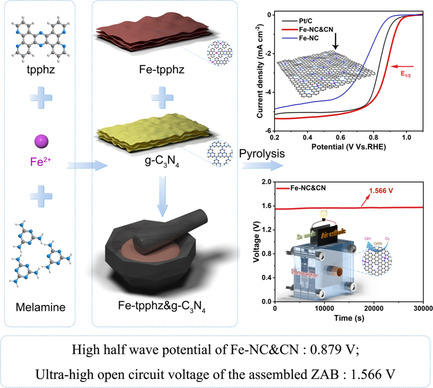
Synergistic N-doping effect of Fe–tetrapyridophenazine (tpphz) and g-C3N4 leads to a super oxygen reduction catalyst Fe–NC&CN (E1/2 = 0.879 V), better than commercial Pt/C in all aspects owing to the abundant FeNX active sites, large specific surface area, suitable pore structure, and good conductivity. The assembled Zn–air battery (ZAB) with Fe–NC&CN also has an ultrahigh open-circuit voltage of 1.566 V.
Pressure- and Temperature-Dependent Interface Kinetics in Na3Zr2Si2PO12-Based All-Solid-State Na Metal Battery
- First Published: 10 September 2022
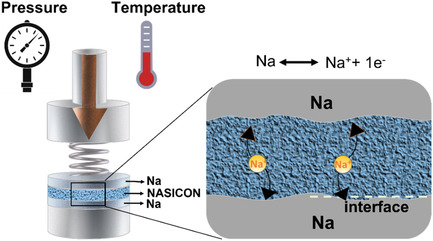
Enhanced interface kinetics are achieved at elevated pressure and temperature in Na3Zr2Si2PO12-based all-solid state Na symmetric cells. At 100 MPa stack pressure and 50 °C, the voltage polarization of the cells is ≈10 times lower than those tested at 25 °C, demonstrating a new strategy for stable operation of high-energy, solid-state Na batteries.
Phenethylammonium Iodide Passivation Layers for Flexible Planar Perovskite Solar Cells
- First Published: 06 August 2022

Planar perovskite solar cells on flexible substrates show improved efficiency and stability thanks to the addition of low-temperature solution-processed phenethylammonium iodide (PEAI) passivation layers on top of the perovskite film. Several batches of flexible devices with different PEAI layer thicknesses are characterized in terms of performance, stability, and optoelectronic properties.
Silk Template Enabled Multi-Hollow Graphene Fibers for Electrochemical Electrode
- First Published: 09 August 2022
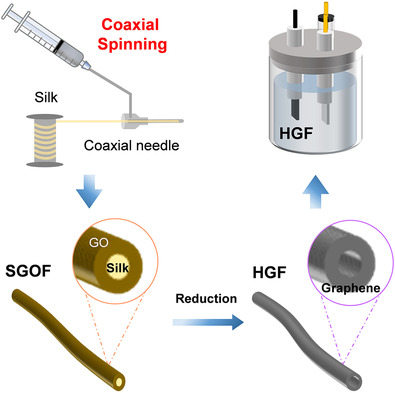
Graphene fibers with the tunable multi-hollow structure are developed by the dry spinning of graphene oxide via sacrificial silk fiber template, achieving fiber electrodes with a high surface specific area and electrochemical activity (357.25 F m−2 at 200 μA). It presents a potentially scalable process of electrochemical fibers with low dependence on precursor concentration, improved spinning efficiency, and enhanced fiber strength.
Effects of Fast Charging Modes on Thermal Performance of Lithium-Ion Battery
- First Published: 20 August 2022
Efficient and Stable Inverted Perovskite Solar Cells with Graphene Oxide-Modified Hole Transport Layer
- First Published: 06 August 2022
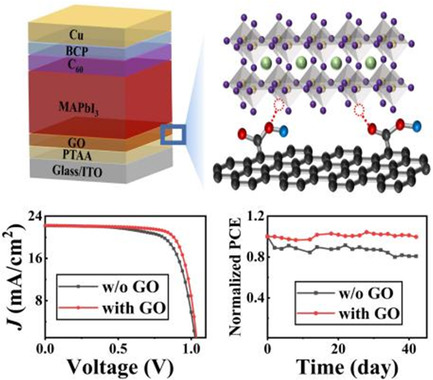
Graphene oxide has been applied and proved a controllable modifier for the surface property of PTAA hole transporter that can also effectively passivate the adjacent perovskite layer, with optimized efficiency increased from 16.21% to 17.73% and long-term stability of encapsulated device that remained 99.6% of initial efficiency after 42 days of exposure to the environment.
High-Efficiency Energy Management Circuit Combining Synchronized Switch Harvesting on Inductor Rectifier and Impedance Matching for Impact-Type Piezoelectric Energy Harvester
- First Published: 05 August 2022

This work combines the synchronized switch harvesting on inductor (SSHI) and alternative impedance matching for the impact-type piezoelectric energy harvesters. It deduces output power and switch delay of self-powered SSHI under decaying source and presents a power-saving mode to save energy under insufficient conditions. The proposed circuit shows 3.68× boost of the standard circuit and has 90.4% efficiency.
Catalytic Cracking of Waste Tires using Nano-ZSM-5/MgAl-LDO
- First Published: 19 July 2022
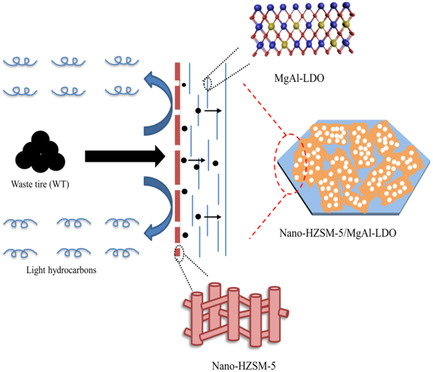
Micro-mesoporous nano-ZSM-5/MgAl-LDO composite with suitable acid–base bifunctional properties obviously improves the conversion rate of waste tires (62.04%), degradation rate (1.33 × 10−3 s−1), and selectivity of light hydrocarbons (33.32%), which was nearly 10% higher than that of thermal pyrolysis.
Pore Structure Modification of Pitch-Derived Hard Carbon for Enhanced Pore Filling Sodium Storage
- First Published: 24 August 2022
Inhomogeneous Aging in Lithium-Ion Batteries Caused by Temperature Effects
- First Published: 09 August 2022
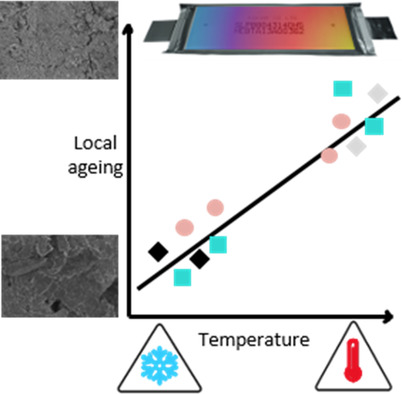
This experimental study shows how temperature gradients over the length of the cell and temperature changes with time impact the local aging effects on electrode and particle level in lithium-ion batteries. For example, electrode thickness, lithium concentration, and the lattice structure are mainly altered according to the local temperature, while temperature transients cause completely different degradation mechanisms.
Semitransparent Printable Mesoscopic Perovskite Solar Cells for Tandem Solar Cells
- First Published: 25 August 2022
Single and Double Layer of Monoclinic VO2 Ink-Based Printed and Interdigitated Supercapacitors
- First Published: 24 August 2022
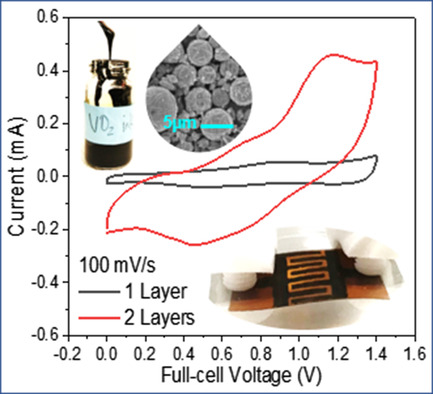
A variety of minimized electronics could be developed through cost-effective screen printing. Preparing homogeneous and stable inks for electrochemical energy storage devices is still challenging. Pure monoclinic VO2 ink has been prepared without toxic solvents and then printed in symmetric supercapacitors. In an aqueous KOH electrolyte, the operating voltage reaches 1.4 V with an areal energy of 0.8 μWh cm−2.
Leveraging Synergies by Combining Polytetrafluorethylene with Polyvinylidene Fluoride for Solvent-Free Graphite Anode Fabrication
- First Published: 24 August 2022
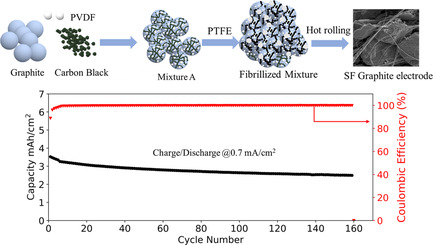
Solvent-free graphite anode is fabricated with the synergistic effect of polytetrafluorethylene (PTFE) and polyvinylidene fluoride (PVDF). PTFE acts as processing aid reagent to form a self-supporting electrode film, while PVDF acts as a functional binder when PTFE decomposes in the first lithiation process. The solvent-free graphite electrode with high loading shows good stability with more than 95% capacity retention after 50 charge/discharge cycles.
A Robust Electrocatalyst for Oxygen Reduction Reaction Assembled with Pt Nanoclusters and a Melem-Modified Carbon Support
- First Published: 24 August 2022
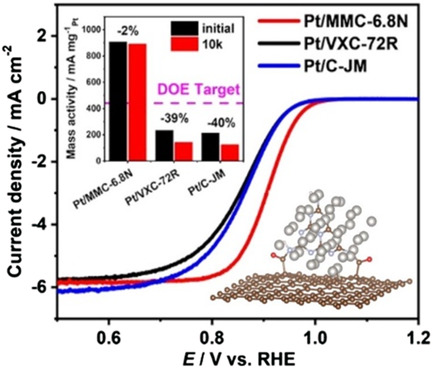
A prepared melem-modified carbon-supported platinum catalyst (Pt/MMC) exhibits high catalytic activity for the oxygen reduction reaction (2.1 times that of the 2020 U.S. Department of Energy target) and excellent durability in an accelerated aging test in a high potential region (1.0–1.5 V). The origin of the obvious promotion effect of MMC on the catalytic properties is clearly revealed for the first time.
Facile Sulfuration Route to Enhance the Supercapacitor Performance of 3D Petal-like NiV-Layered Double Hydroxide
- First Published: 25 August 2022
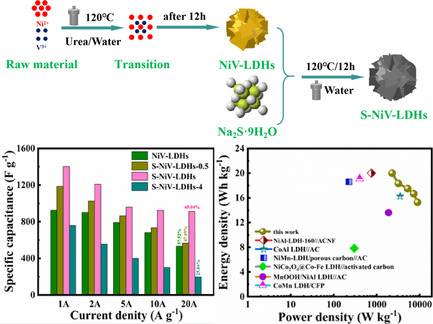
The new petal-like S-NiV-layered double hydroxide (LDH) materials are successfully synthesized by a presynthetic solvothermal reaction and a sulfidation modification procedure. Due to the Ni3S2 formed on the surface of NiV-LDHs, the S-NiV-LDHs sample shows better energy storage performance and stability than NiV-LDHs.
Performance Analysis and Optimization of a Novel Combined Cooling, Heating, and Power System-Integrated Rankine Cycle and Brayton Cycle Utilizing the Liquified Natural Gas Cold Energy
- First Published: 24 August 2022
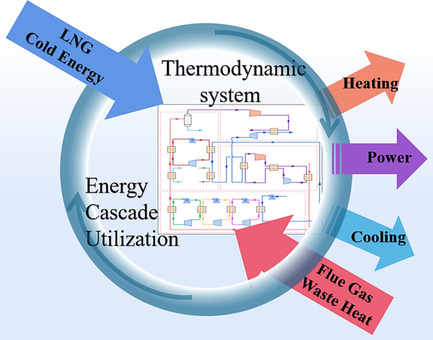
Herein, a combined cooling, heating, and power system, for achieving cascade utilization of liquefied natural gas cold energy and high-temperature flue gas waste heat, is proposed. It explores system performance from thermal efficiency, exergy efficiency, exergoeconomy, and exergoenvironment and chooses different parameters to dynamically analyze the performance changes. Nondominated sorting whale optimization algorithm is adopted to optimize the system.
Printable Low-Temperature Carbon for Highly Efficient and Stable Mesoscopic Perovskite Solar Cells
- First Published: 25 August 2022
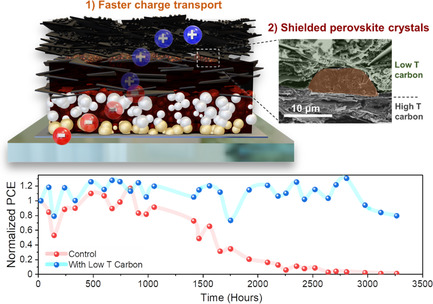
The moisture stability, thermal stability, and photovoltaic performance are improved in double-carbon layers configured with carbon-based perovskite solar cells (C-PSCs). The discovery of protruding perovskite crystals, which form from the excessive perovskite solution on the conventional C-PSCs, is investigated for the first time, and it is evidenced to be detrimental to device stability.
Impact of Polymeric Hole-Selective Layers on Chemical Inductance in Inverted Perovskite Solar Cells
- First Published: 31 August 2022
Lithium-Ion Battery Testing Capable of Simulating “Ultralow” Lunar Temperatures
- First Published: 07 September 2022
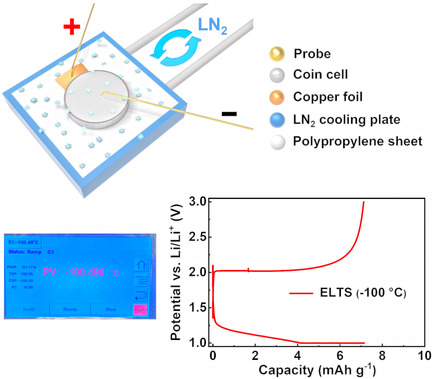
A battery testing system is developed to simulate extreme climate like the lunar surface, high altitude, and polar regions of Earth. Efficient liquid nitrogen flow and the tailored configuration enable the system to reach an extreme temperature of −175 °C. Furthermore, a Li4Ti5O12||Li cell produces a reversible capacity of 7.12 mAh g−1 at −100 °C for the first time.
Discharged Titanium Oxide Nanotube Arrays Coated with Ni as a High-Performance Lithium Battery Electrode Material
- First Published: 06 September 2022
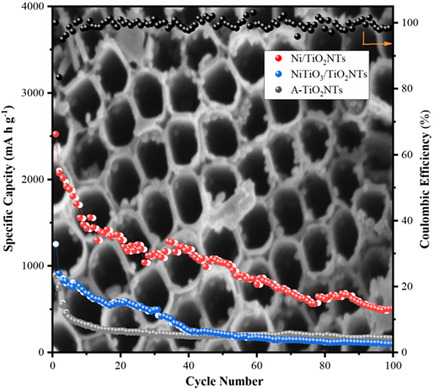
Herein, TiO2 nanotube arrays coated with Ni (Ni/TiO2NTs) are fabricated by using a predischarge-electrodeposition method and subsequent calcination under H2/N2. The Ni/TiO2NTs composite electrode maintains a high capacity of 522 mA h g−1 after 100 cycles at 0.2 A g−1. The predischarge-electrodeposition provides a new route for the preparation of composite materials.
A High Rate and Long Cycling Performance NaTi2(PO4)3 Core–Shell Porous Nanosphere Anode for Aqueous Sodium-Ion Batteries
- First Published: 07 September 2022
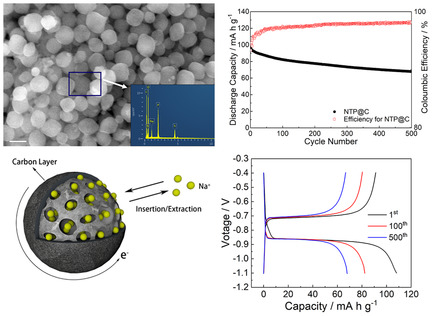
Herein, the electrochemical behavior and performance of the NaTi2(PO4)3 electrode materials in the aqueous sodium ion battery is investigated. The sodium-ion diffusion coefficient of the material is calculated to discuss the diffusion mechanism of the composite material. This unique structure of NaTi2(PO4)3 presents high performance in an aqueous sodium-ion battery.
Nonthermal Plasma-Modified Carbon-Carrying Sn-Based Ternary Nanocatalyst for High-Performance Direct Dimethyl Ether Fuel Cells
- First Published: 07 September 2022
Tailoring the Void Space of a Silicon Anode for High-Capacity and Low-Expansion Lithium Storage
- First Published: 08 September 2022
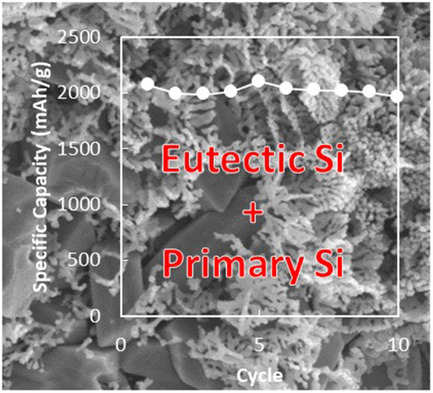
By leaching Al from Al–Si alloys, Si anodes are easily prepared as high-capacity and low-expansion Li-storage materials. This approach might be a universal method that can be applied to other alloy systems. The obtained well-designed anode consisting of microscale primary Si and nanoscale eutectic Si particles can suppress the volume expansion that occurs upon Li insertion.
MgSc2Se4 Solid Electrolyte for Rechargeable Mg Batteries: An Electric Field-Assisted All-Solid-State Synthesis
- First Published: 07 September 2022
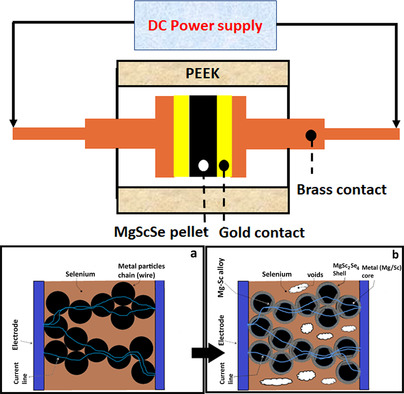
Herein, room-temperature synthesis of a magnesium-ion conducting MgSc2Se4 chalcogenide spinel via the application of an electric field is described. This material is a prospective solid electrolyte for future generation all-solid-state magnesium batteries. The chalcogenide spinel class of materials is known for its Mg-ion conductivity at room temperature and can be employed as a solid electrolyte in Mg/Mg alloy anode-based all-solid-state batteries for energy storage applications.
P-Doped MoO2/Porous Ni Self-Supported Catalyst for Electrocatalytic Hydrogen Evolution in Alkaline Solution
- First Published: 09 September 2022
Investigation of the Performance and Recession Mechanisms of High-Nickel Ternary Lithium-Ion Batteries Under Artificial Aging Discharge Rates
- First Published: 14 September 2022
Prediction on Discharging Properties of Nickel–Manganese Materials for High-Performance Sodium-Ion Batteries via Machine Learning Methods
- First Published: 16 September 2022
Wind-Induced Response and Stow Position Analysis of the Flat Roof Parabolic Solar Collector
- First Published: 16 August 2022
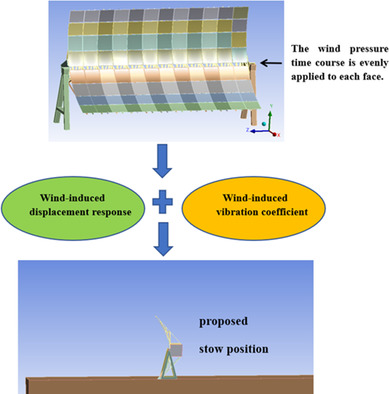
The wind-induced response characteristics and variation laws of the flat-roof parabolic solar collector are obtained through wind tunnel experiments and finite element simulations, and then the calculation results are compared and analyzed with the ground parabolic solar collector. Finally, through a comprehensive analysis, the proposed stow location is put forward to improve the safety and service life of the collector.
Methane Pyrolysis in a Liquid Metal Bubble Column Reactor: A Model Approach Combining Bubble Dynamics with Byproduct and Soot Formation
- First Published: 14 September 2022
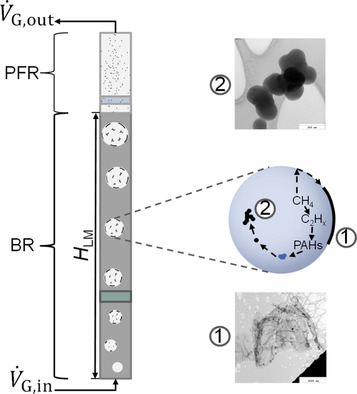
By decarbonizing natural gas via methane pyrolysis, hydrogen can be produced without CO2 emissions. Methane pyrolysis in a liquid metal bubble column reactor produces at least two types of carbon: soot and graphene-like carbon sheets. A model is presented which couples bubble dynamics with a kinetic mechanism that includes byproduct and soot formation.
Survey of 53 Fifth-Generation District Heating and Cooling (5GDHC) Networks in Germany
- First Published: 30 August 2022
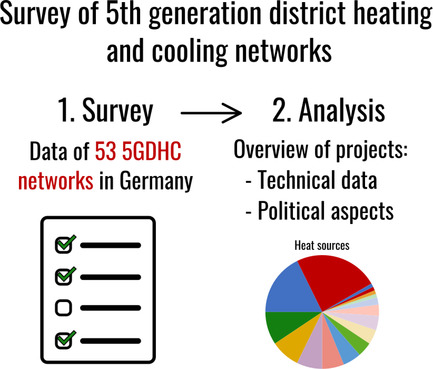
This article presents data for 53 fifth-generation district heating and cooling (5GDHC) networks in Germany. The data is collected in a comprehensive survey among utility companies and engineering offices. The survey data includes technical information, such as network temperatures, heat sources, network lengths, and primary energy factors, as well as economic and political design decisions like price models.
Polyethylene Glycol Dodecyl Ether as Interfacial Modifier for Improving Efficiency of Perovskite Solar Cells
- First Published: 16 September 2022
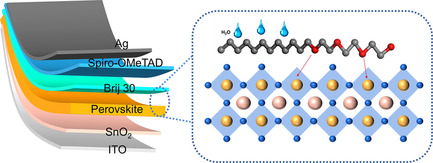
An interfacial modifier of polyethylene glycol dodecyl ether (Brij) with ether group (C–O–C) and long alkyl chain is introduced into the surface of the perovskite layer, which passivates the defects, tunes the energy gradient, promotes the carrier extraction and transportation, enhances the moisture resistance of perovskite films, and consequently improves the performance and stability of perovskite solar cells.





